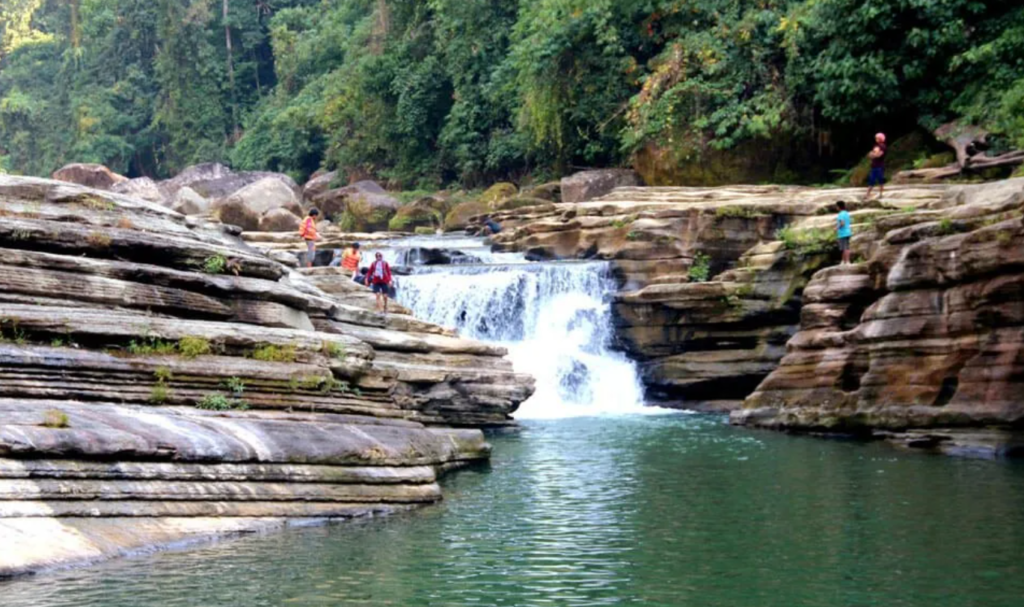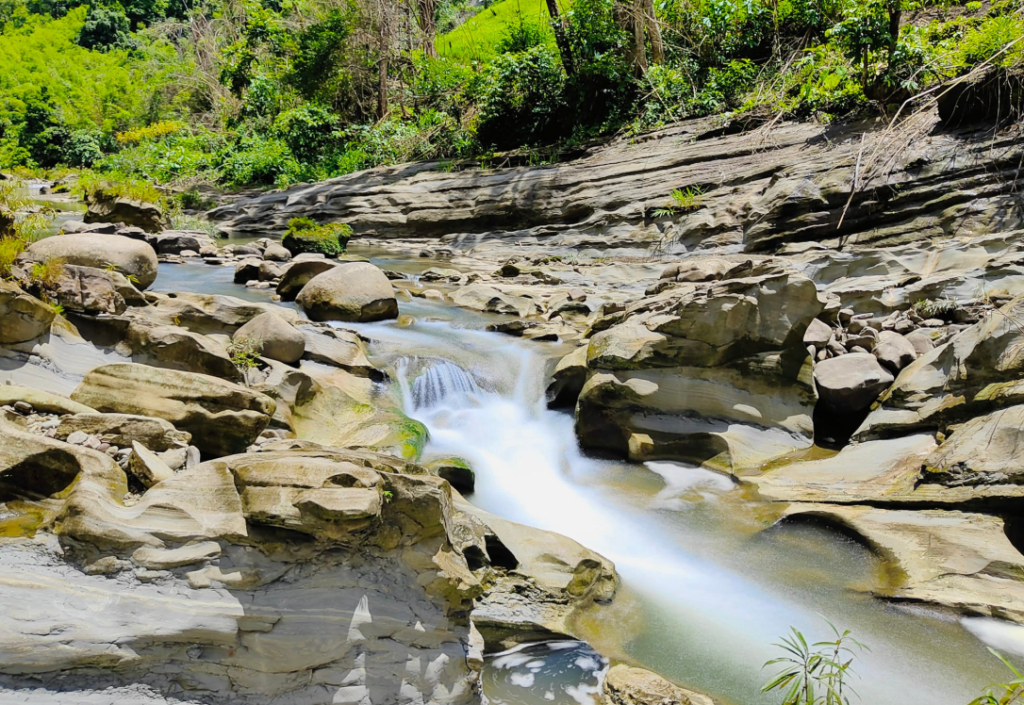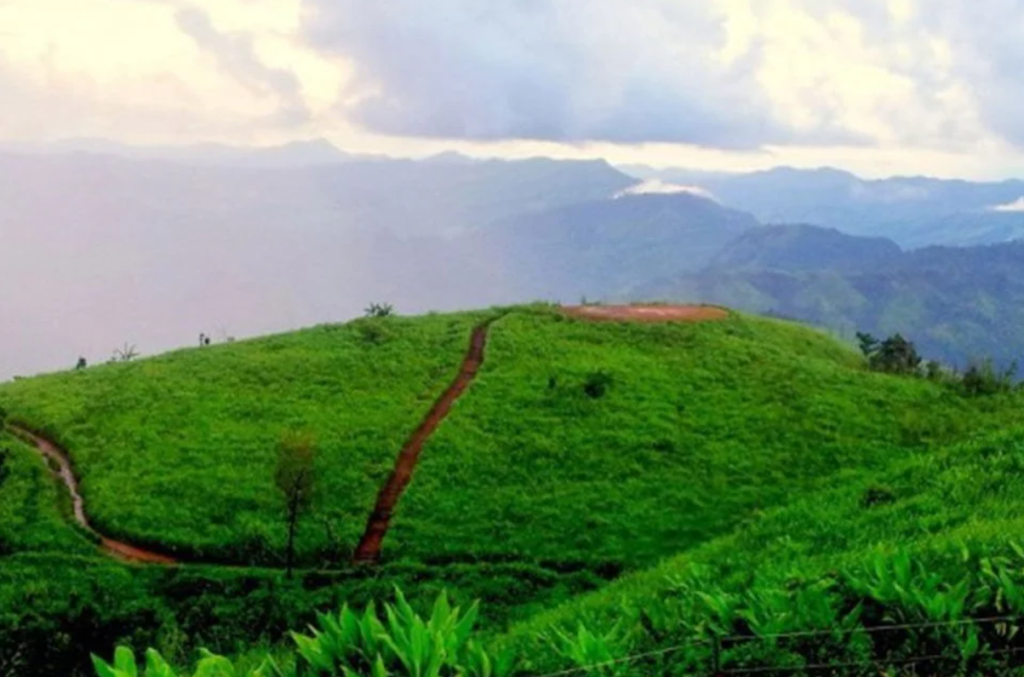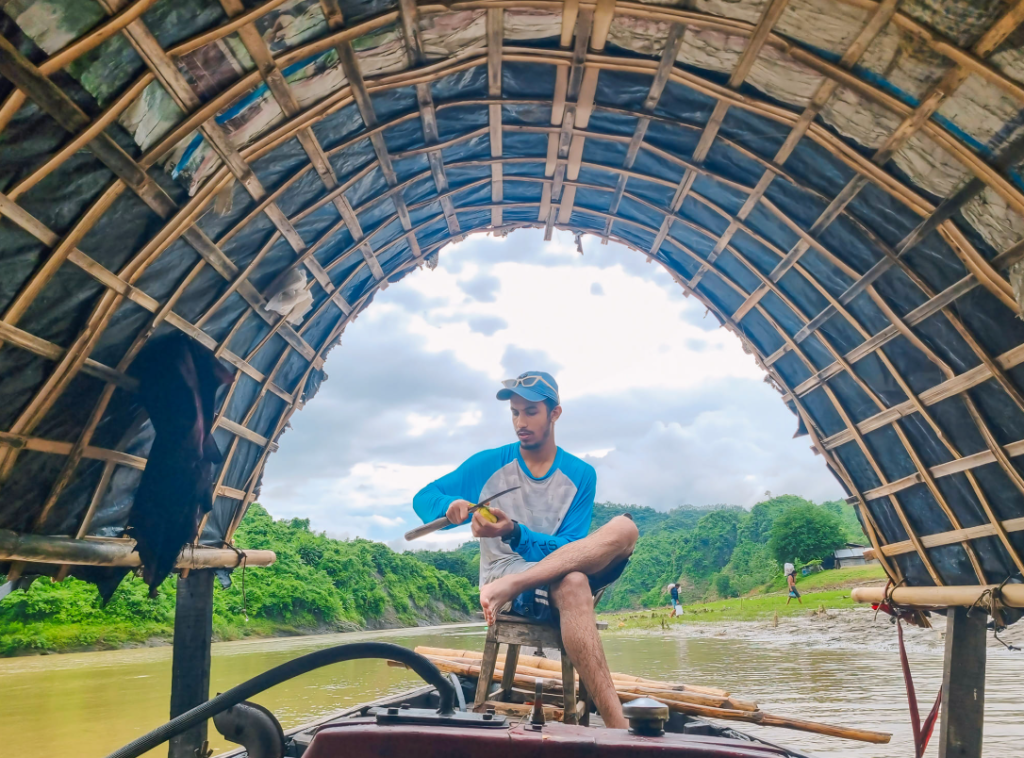Nestled in the heart of the Chittagong Hill Tracts, Bandarban is a land of stunning natural beauty, cultural diversity, and ancient traditions. Known for its rolling hills, dense forests, vibrant indigenous communities, and serene landscapes, Bandarban offers a unique escape from the chaos of city life. Whether you’re an adventure seeker, a nature lover, or someone looking to immerse yourself in a rich cultural experience, Bandarban is a destination that promises to leave you enchanted.
Let’s explore the various aspects that make Bandarban one of Bangladesh’s most captivating hill districts.
The Geographic Charm of Bandarban
Bandarban is located in the southeastern part of Bangladesh, bordered by the Indian state of Tripura to the north, the Arakan mountains of Myanmar to the southeast, and the Bay of Bengal to the south. Its geography is characterized by lush, rolling hills, dense forests, and serene rivers, making it a paradise for nature enthusiasts.
Key Geographic Features:
- Hilly Terrain: Bandarban’s terrain consists of steep hills, deep valleys, and rushing rivers, which are part of the Chittagong Hill Tracts. The highest peak in Bangladesh, Keokradong, is located here at 1,230 meters above sea level.
- Rivers and Lakes: The district is crisscrossed by numerous rivers and streams, including the Sangu River, Bogra River, and Mulamuti Lake, which add to the natural beauty of the region.
- Buddhist Monuments: Bandarban is home to several Buddhist temples and pagodas, like the Buddha Dhatu Jadi (Golden Temple) in Ruma, which is one of the largest Buddha statues in Bangladesh.
A Glimpse into Bandarban’s History and Culture
Bandarban has a rich history and a vibrant cultural landscape that reflects its diverse ethnic groups. The district is home to numerous indigenous communities, each with its own unique traditions, language, and lifestyle.

- Indigenous Tribes: Bandarban is home to a variety of indigenous tribes, including the Marma, Chakma, Mro, and Bawm, among others. Each tribe has its own customs, attire, festivals, and craftsmanship that are deeply rooted in their history.
- Kevaraj Kingdom: Historically, Bandarban was ruled by the Kevaraj (king) system. The kings were from the Marma ethnic group, and their legacy is still visible in the region’s cultural practices and royal traditions.
- Buddhist Influence: Buddhism has a strong influence in Bandarban, particularly among the Marma and Chakma communities. Temples, monasteries, and pagodas are scattered across the district, serving as centers of spiritual and cultural life.
- Liberation War of 1971: Bandarban played a significant role during the Bangladesh Liberation War, with local freedom fighters contributing significantly to the cause. The sacrifices of the indigenous people are remembered and honored in various ways throughout the district.
Upazilas of Bandarban
Bandarban is divided into several upazilas, each offering unique attractions and experiences:
1. Sadar Bandarban
Sadar Bandarban is the administrative center of the district and serves as the gateway to the hill region. It’s a bustling area with local markets, government offices, and cultural events. The district town itself is surrounded by picturesque hills and offers easy access to the natural beauty of Bandarban, including the iconic Buddha Dhatu Jadi and the local tribal villages.
2. Lama
Lama is renowned for its serene landscapes and tranquil atmosphere. It’s a popular starting point for trekking trails leading to some of Bandarban’s highest peaks, including Keokradong. The upazila is also known for its rich cultural heritage and the opportunity to interact with indigenous communities. Visitors can enjoy the local festivals, traditional music, and crafts of the Marma, Mro, and other tribes.
3. Alikadam
Alikadam is a hidden gem of Bandarban, known for its picturesque hills and traditional bamboo crafts. The upazila is a perfect destination for travelers seeking a quieter, more rural experience. It’s an excellent base for exploring the natural beauty of the region, including waterfalls, hiking trails, and serene landscapes. The local communities here are warm and welcoming, preserving their cultural heritage through art and festivals.
4. Naikhongchhari
Naikhongchhari is located near the Bangladesh-Myanmar border and offers a unique cultural experience. The upazila is known for its diverse ethnic groups and cross-border cultural exchanges. Visitors can enjoy boat trips on the beautiful river, explore the lush forests, and witness the traditional ways of life of the indigenous tribes. It’s an excellent spot for eco-tourism and experiencing the local biodiversity.
5. Ruma
Ruma is famous for being the gateway to the highest peaks of Bangladesh, including Keokradong and Tahjindong. It’s a trekkers’ paradise, with trails that lead through dense forests, offer stunning views of the landscape, and culminate at the summit. The upazila is also home to the Mro and Marma tribes, whose cultural practices and hospitality make it a unique destination for cultural tourism.
6. Rowangchhari
Rowangchhari is one of the lesser-known upazilas, known for its vibrant tribal culture and remote beauty. It offers an authentic experience of rural life in Bandarban, with lush green hills, traditional wooden houses, and local markets. The upazila is a great place for those interested in trekking, exploring cultural heritage, and enjoying the tranquility of nature.
7. Thanchi

Thanchi is an upazila that offers a gateway to the Three River Junction (Tin Nodi Mohona) where the Sangu, Dakatia, and Halda Rivers converge. It’s a stunning spot for boat rides, offering views of the surrounding hills and lush vegetation. Thanchi is also known for its trekking trails and waterfalls, making it an ideal place for outdoor enthusiasts. The upazila is home to the Mro, Chakma, and Bawm communities, each contributing to the rich cultural fabric of the region.
Adventure Activities in Bandarban
Bandarban is a haven for adventure seekers, offering activities that allow visitors to explore its natural wonders up close. From trekking and hiking to boat rides on serene rivers, there’s no shortage of exhilarating experiences here.
1. Trekking to Keokradong and Tahjindong

Tazing Dong Peak ,Bandarban
- Why Visit: These are the two highest peaks in Bangladesh and offer some of the most spectacular views. The trek is challenging but rewarding, with breathtaking landscapes and a chance to witness the diverse flora and fauna of the region.
- Unique Feature: The trekking trails are surrounded by dense forests, offering a true wilderness experience. You’ll pass by waterfalls, tribal villages, and can enjoy stunning sunsets and sunrises from the peaks.
2. Boat Rides on the Sangu River

- Why Visit: The Sangu River, one of the largest rivers in the Chittagong Hill Tracts, offers a tranquil boat ride experience. You can explore the river’s meandering course and admire the lush greenery and surrounding hills.
- Unique Feature: The boat rides allow you to visit remote villages and interact with indigenous people, experiencing their way of life up close.
3. Exploring the Waterfalls
- Why Visit: Bandarban is dotted with beautiful waterfalls like Nilgiri, Keokradong, and Beauty Pool. These natural wonders are perfect for a refreshing dip after a trek.
- Unique Feature: Each waterfall is surrounded by lush forests and is a great spot for picnics or simply soaking in the serene atmosphere.
4. Visiting Buddhist Monuments
- Why Visit: Bandarban is home to several Buddhist sites, including the Golden Temple and the Buddha Dhatu Jadi. These places offer a glimpse into the spiritual life of the indigenous communities.
- Unique Feature: The Buddha Dhatu Jadi, in particular, is known for its stunning architecture and large Buddha statue, making it a significant pilgrimage site.
Cultural Heritage and Festivals
The cultural richness of Bandarban is reflected in its festivals, traditions, and craftsmanship. The people of Bandarban celebrate life with joy and enthusiasm, honoring their heritage through various festivals and customs.
- Festivals:
- Pohela Boishakh: The Bengali New Year is celebrated with cultural programs, traditional music, dance, and fairs. The indigenous tribes also celebrate their new year in their own ways, with rituals, dance, and music.
- Buddha Purnima: This Buddhist festival is observed with religious ceremonies, prayers, and processions, marking the birth, enlightenment, and death of Buddha.
- Harvest Festivals: Many indigenous tribes celebrate harvest festivals like Bishu, Sangrai, and Buddha Jayanti, which involve feasting, dancing, and sharing of local delicacies.
- Cuisine:
- Bandarban’s cuisine is a delightful mix of Bengali, indigenous, and tribal flavors. Rice, fish, and vegetables are staples, along with a variety of local meats and dishes like panta bhat (fermented rice), bamboo shoot curry, and roasted fish. The indigenous tribes have their own unique dishes made from locally available ingredients.
- Street Foods: Local markets are bustling with stalls selling traditional snacks like jhalmuri, pithas (rice cakes), and fuchka (pani puri).
- Craftsmanship:
- The indigenous communities of Bandarban are skilled artisans, known for their weaving, pottery, and bamboo crafts. You can find beautiful handmade items like baskets, mats, and traditional attire in the local markets.
- The Mro people are particularly known for their beadwork, which they use in jewelry and accessories.
Challenges and Development
While Bandarban is a place of extraordinary beauty, it faces challenges related to infrastructure, communication, and environmental conservation. Development efforts are ongoing, but the region’s remoteness requires careful planning and investment.
- Infrastructure Development: Improving roads, healthcare facilities, and educational institutions is a priority. Efforts are being made to connect remote villages with better transportation and communication facilities.
- Environmental Conservation: The lush forests and wildlife of Bandarban are under threat from deforestation and land degradation. Local initiatives are being implemented to promote sustainable practices and protect the biodiversity of the region.
- Tourism Management: With the increasing number of visitors, there’s a need to balance tourism development with environmental conservation. Eco-friendly tourism practices are encouraged to minimize the impact on the natural surroundings.
Getting to Bandarban
Bandarban is accessible from Dhaka and Chittagong, with several options for travelers:
- By Road: The most common route is from Dhaka to Chittagong and then to Bandarban by bus or car. The road journey offers scenic views of the hilly terrain and rivers.
- By Train: There are train services from Dhaka to Chittagong. From Chittagong, you can take a bus or hire a car to Bandarban.
- By Air: The nearest airport is in Chittagong, with several domestic flights connecting major cities. From the airport, you can take a bus or taxi to Bandarban.
Best Time to Visit: The cooler months from October to March are ideal for exploring Bandarban, with pleasant weather and clear skies perfect for outdoor activities.
Final Thoughts: Why Visit Bandarban?
Bandarban is a place where the soul finds solace amidst nature’s grandeur. Whether you’re trekking through the hills, boating along the rivers, or exploring the cultural sites, there’s an authentic experience waiting for you. It’s a destination where every step you take reveals a new perspective on life, history, and nature.
So, why not step off the beaten path and experience the magic of Bandarban? It’s a place where tradition and progress coexist, where every traveler can find their peace and adventure. Whether you’re drawn by its stunning landscapes, rich culture, or warm hospitality, Bandarban promises a journey of a lifetime.




